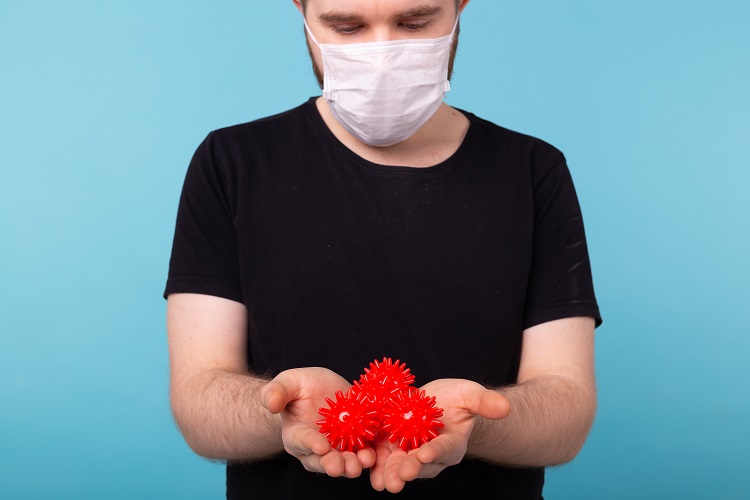In the World Of Dating, love, and intimacy, honesty is supposed to be the foundation of trust. Yet when it comes to sexual health, many people struggle with disclosure. The fear of rejection, stigma, and embarrassment often lead individuals to hide an STD diagnosis from their partner. But secrets have a way of surfacing—sometimes in the most unexpected and surprising ways.
This article explores surprising ways people get caught hiding an STD, while also addressing the importance of honesty, safer sex, and open communication. By humanising these situations, we can better understand why people hide, how they get caught, and why transparency matters in relationships and hookups alike.
People Hide an STD in the First Place
Before we dive into the surprising ways people get caught, it’s important to understand the motivation behind secrecy. Many individuals are terrified of rejection or social judgment. Stigma surrounding STDs like herpes, HIV, HPV, and chlamydia is still strong, making people feel ashamed of something that’s actually very common.
Others may not know how to start the conversation, especially if they just started dating someone. Some think they can delay disclosure until the relationship becomes serious, while others may convince themselves they won’t infect their partner. Unfortunately, hiding rarely works out—and the truth usually comes out in uncomfortable ways.
Medical Records and Doctor Visits Tell the Story
One of the most surprising ways people get caught hiding an STD is through medical records or unexpected doctor visits. Imagine going to a clinic together for a routine check-up or couple’s test, only to discover a history of treatment for gonorrhea or herpes.
In many relationships, partners eventually accompany each other to the doctor or share medical insurance. When test results or prescriptions are revealed, the hidden truth surfaces. These unintentional disclosures can be shocking and hurtful—not just because of the STD itself, but because of the dishonesty.
Prescription Bottles Left Behind
It may sound simple, but many people get caught hiding an STD when their partner stumbles upon a prescription bottle. Medications like Valacyclovir (Valtrex for herpes) or antibiotics for recurring infections often reveal more than words ever could.
Something as small as a pill bottle in a bathroom cabinet, nightstand, or purse has ended many secrets. A partner who sees the label may start googling, and within minutes the hidden diagnosis becomes obvious. For many, this kind of discovery feels like betrayal because it shows intentional concealment.
The Role of Mutual Friends and Social Circles
Sometimes it isn’t medical professionals or prescriptions that expose the truth—it’s people. In tight-knit communities, word spreads quickly. A mutual friend may mention a past relationship where someone disclosed herpes or HPV, and suddenly, the new partner connects the dots.
This is one of the most humanising yet painful ways people get caught hiding an STD—because it involves trust and gossip. While no one should ever disclose someone else’s health without consent, it happens more often than people realize. And when it does, it often creates tension not just in the relationship, but in entire social circles.
Visible Symptoms That Can’t Be Hidden
Another obvious but overlooked way people get caught is through visible symptoms. Cold sores, genital outbreaks, or frequent doctor visits for urinary issues can all raise suspicions. A partner might notice recurring symptoms, ask questions, and eventually realize what’s being hidden.
The body often speaks louder than words. While some STDs can remain dormant for years, others cause noticeable symptoms that partners can detect. Even if someone tries to dismiss it as a rash, allergy, or stress-related issue, partners often sense when something doesn’t add up.
Digital Trails: Texts, Emails, and Search History
In today’s digital age, secrets are harder to keep. Many people have been caught hiding an STD through digital trails—text messages from doctors, emails about test results, or even saved searches on their phone like “how to tell someone you have herpes.”
Partners who stumble upon these clues often feel blindsided. Even if the intention wasn’t malicious, the secrecy creates a sense of betrayal. In many relationships, this kind of accidental discovery hurts more than the diagnosis itself because it shows a lack of openness.
Social Media Confessions and Dating Apps
Social media has also become a surprising source of exposure. Some people share experiences anonymously in support groups, forums, or dating apps for people with herpes or HIV. But nothing online is truly private. A curious partner might stumble upon these posts, putting two and two together.
Similarly, joining a niche dating site or community for STD-positive singles can reveal the truth if someone notices. While these platforms are safe spaces meant to reduce stigma, they sometimes lead to unexpected exposure if secrecy is the goal.
Accidental Slip-Ups in Conversation
Sometimes the truth comes out in casual conversation. A person might mention “last time I had an outbreak” or “when my doctor prescribed antivirals,” forgetting their partner doesn’t know yet. Alcohol, stress, or simply letting one’s guard down often leads to unplanned confessions.
While this may be embarrassing, it’s often less damaging than a partner finding out through external sources. At least in this case, the disclosure—though unintentional—comes directly from the person living with the STD.
The Emotional Fallout of Hiding an STD
Getting caught hiding an STD is about more than just the diagnosis—it’s about the broken trust that follows. Many partners feel more betrayed by the secrecy than by the condition itself. After all, STDs are manageable and common, but dishonesty in relationships is harder to heal.
The emotional fallout often includes anger, hurt, and distrust. Some relationships survive, especially when partners have strong communication and empathy. But others collapse because the foundation of honesty has been compromised.
Honesty is Always the Best Policy
No matter how scary it feels, disclosing an STD upfront is far better than getting caught hiding it later. Transparency gives both partners the chance to make informed decisions about protection, intimacy, and trust. It also helps reduce stigma, showing that having an STD doesn’t define someone’s worth or ability to love.
Honesty not only protects your partner’s health but also strengthens the relationship. Couples who navigate disclosure together often report stronger bonds because they’ve already tackled one of the hardest conversations possible.
Safer Ways to Handle STD Disclosure
Instead of hiding, there are healthier approaches to STD disclosure:
- Choose the right time and place. Have the conversation privately when both of you are calm and open.
- Educate yourself first. Share facts about the condition so your partner doesn’t only rely on stereotypes or fear.
- Be confident. Remember that an STD doesn’t define you—it’s just a medical condition.
- Offer support. Explain what precautions you’re taking to protect them, such as condoms or medication.
This approach humanises the process and reduces the fear associated with talking about sexual health.
Learning from Real Stories
Real-life stories highlight how easily secrets can unravel. Some people have been caught because a partner saw them taking medication daily. Others were exposed when their doctor called while they were on speakerphone. A few were even revealed during group conversations where old friends let details slip.
These stories remind us that the truth always finds a way out. Instead of fearing exposure, it’s better to embrace honesty from the beginning. It may be uncomfortable in the moment, but it prevents heartbreak later.
Reducing STD Stigma in Dating and Relationships
At the core of this issue lies STD stigma. People hide because they fear judgment, ridicule, or rejection. By changing the conversation around sexual health, we can make it easier for people to disclose without fear.
Education, empathy, and open dialogue are the tools we need to build a culture of understanding. Dating with an STD shouldn’t feel like living with a dark secret. Instead, it should be approached as just another aspect of health, like allergies or chronic conditions.
Conclusion: Secrets Never Stay Hidden Forever
In the end, the most surprising ways people get Caught Hiding An STD all point to the same truth—secrets don’t stay hidden forever. Whether it’s a forgotten prescription, a mutual friend, or an accidental text message, the truth has a way of surfacing.
Instead of risking exposure and broken trust, it’s far healthier to embrace honesty. Not only does it protect your partner’s well-being, but it also allows relationships to be built on transparency and respect. When we humanise sexual health conversations, we reduce stigma and make space for love, trust, and understanding.



